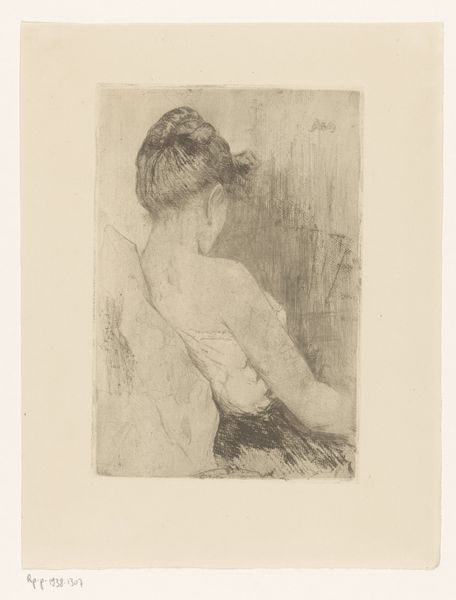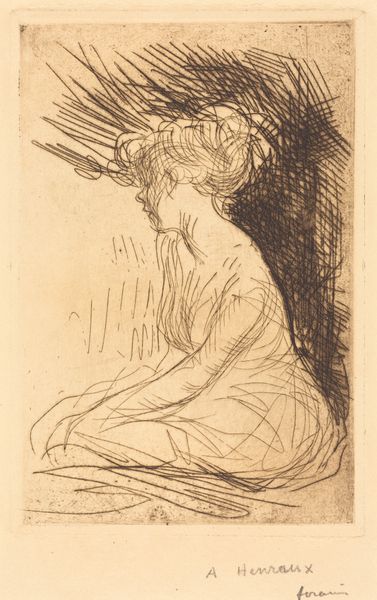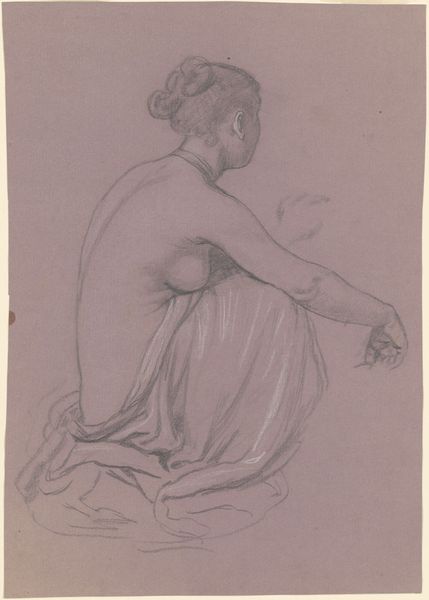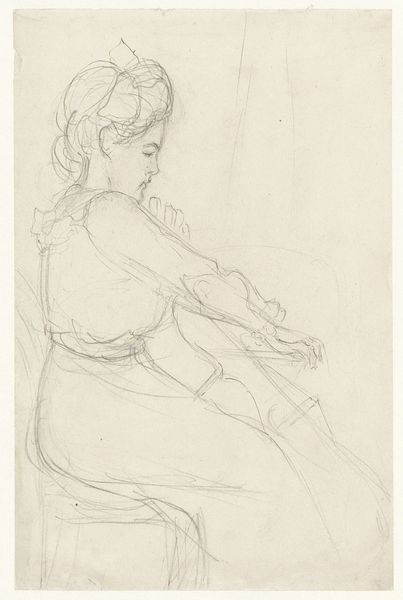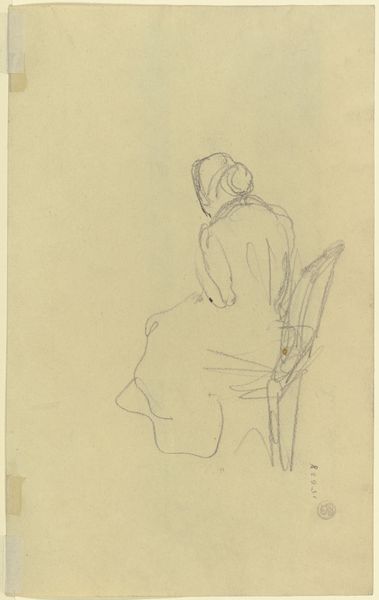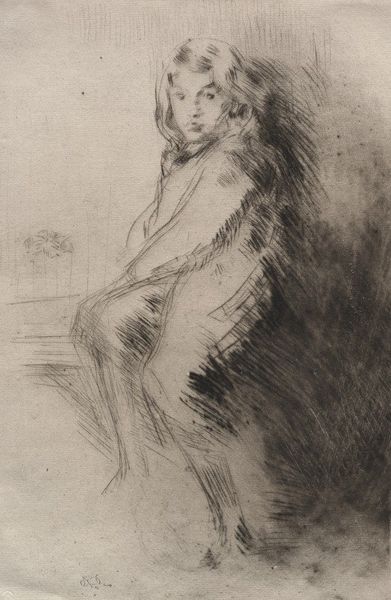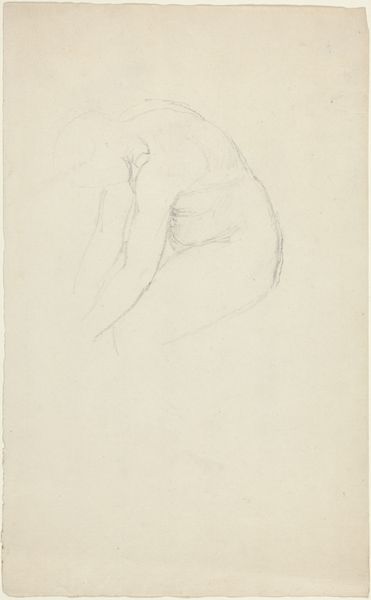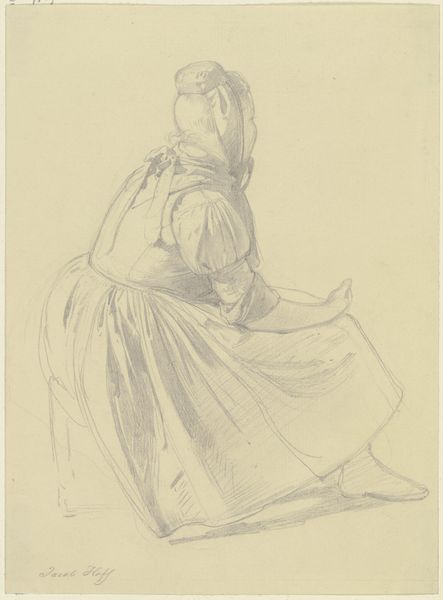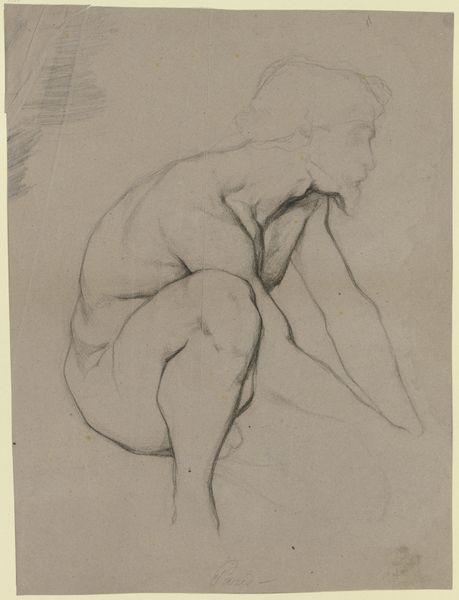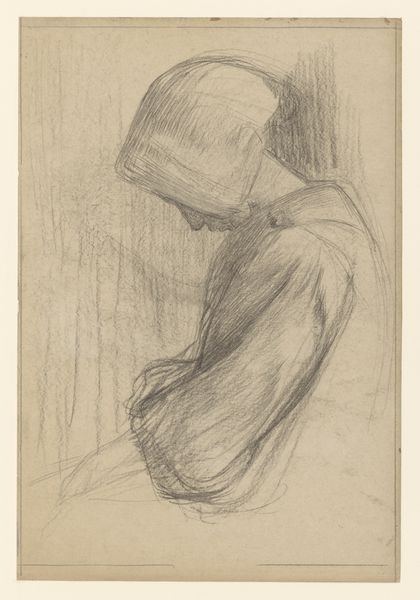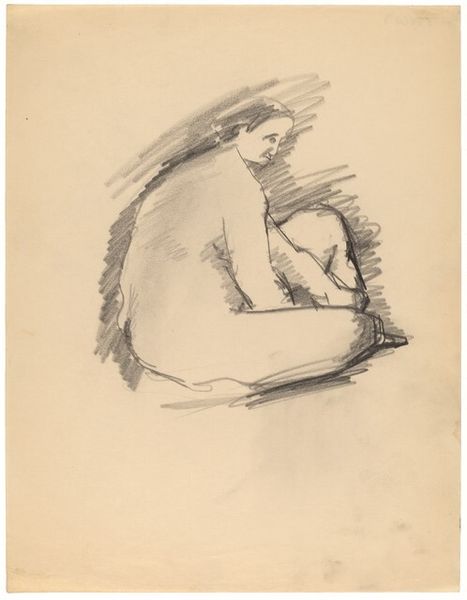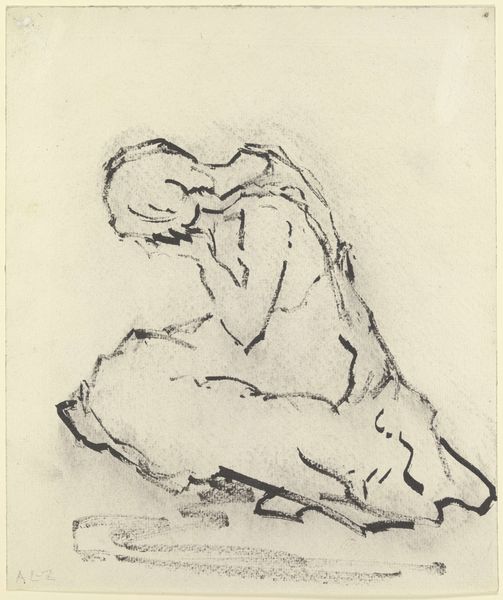
drawing, pencil
#
portrait
#
pencil drawn
#
drawing
#
charcoal drawing
#
figuration
#
pencil drawing
#
pencil
#
portrait drawing
#
nude
Dimensions: 24.4 x 17.5 cm
Copyright: Public domain
Editor: This drawing, "Woman Seated, Seen from Back," by Paul Gavarni, really strikes me with its simplicity. The sketch-like quality, just pencil on paper, gives it an intimate, almost voyeuristic feel. What do you see in this piece? Curator: I'm drawn to the symbolism inherent in depicting a figure from behind. The averted gaze invites us to contemplate what the subject is contemplating. There's a psychological weight there – the unknown, the unseen. The vulnerability of the nape of the neck… Editor: Yes! It makes you wonder what she is thinking. Curator: Indeed. Consider the cultural context. During the 19th century, images of women, especially nude or partially clothed, were often loaded with societal expectations and projections. But by showing her from behind, Gavarni subtly subverts that, doesn't he? He protects her identity and her thoughts. Does this evoke any continuity in art history? Do other artists use this compositional element? Editor: I see your point! Like Caspar David Friedrich's wanderer, but it seems there's a whole intimate feeling here. Also, the composition's soft lines convey something timeless…almost haunting. Curator: And is it not haunting? How the symbols persist, yet reshape across the cultural memories and centuries? The seated nude woman remains powerful, from antiquity to the present, yet transforms, and becomes an empty vessel and mirror, as needed by its audience and context. Editor: Thinking about the symbolism helps unpack so much more in the image. Curator: Indeed! Seeing art through the lens of imagery connects the conscious and the unconscious in interesting ways. It becomes a mirror reflecting collective feelings and experiences of past and present.
Comments
No comments
Be the first to comment and join the conversation on the ultimate creative platform.
